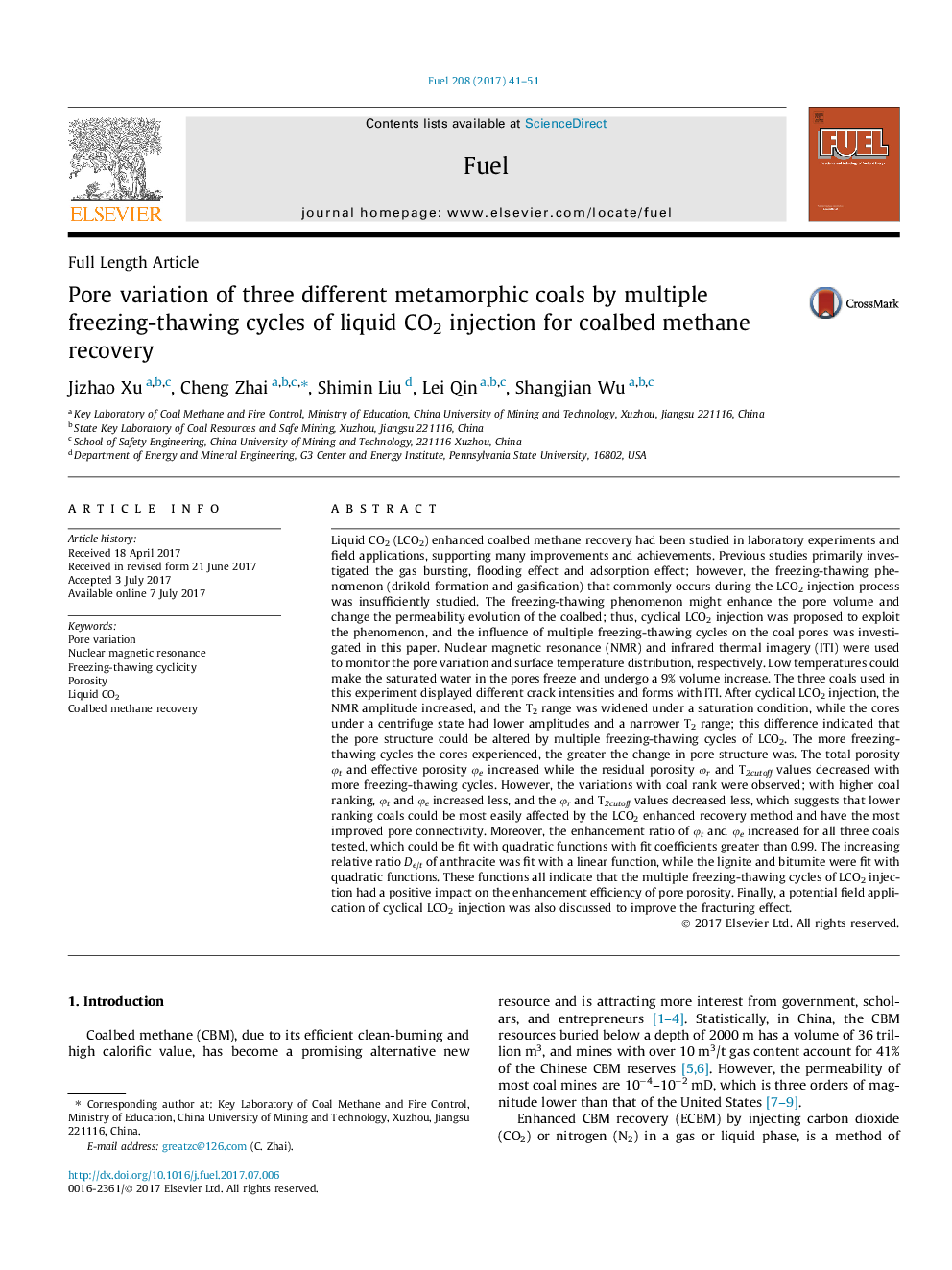| Article ID | Journal | Published Year | Pages | File Type |
|---|---|---|---|---|
| 6474052 | Fuel | 2017 | 11 Pages |
Liquid CO2 (LCO2) enhanced coalbed methane recovery had been studied in laboratory experiments and field applications, supporting many improvements and achievements. Previous studies primarily investigated the gas bursting, flooding effect and adsorption effect; however, the freezing-thawing phenomenon (drikold formation and gasification) that commonly occurs during the LCO2 injection process was insufficiently studied. The freezing-thawing phenomenon might enhance the pore volume and change the permeability evolution of the coalbed; thus, cyclical LCO2 injection was proposed to exploit the phenomenon, and the influence of multiple freezing-thawing cycles on the coal pores was investigated in this paper. Nuclear magnetic resonance (NMR) and infrared thermal imagery (ITI) were used to monitor the pore variation and surface temperature distribution, respectively. Low temperatures could make the saturated water in the pores freeze and undergo a 9% volume increase. The three coals used in this experiment displayed different crack intensities and forms with ITI. After cyclical LCO2 injection, the NMR amplitude increased, and the T2 range was widened under a saturation condition, while the cores under a centrifuge state had lower amplitudes and a narrower T2 range; this difference indicated that the pore structure could be altered by multiple freezing-thawing cycles of LCO2. The more freezing-thawing cycles the cores experienced, the greater the change in pore structure was. The total porosity Ït and effective porosity Ïe increased while the residual porosity Ïr and T2cutoff values decreased with more freezing-thawing cycles. However, the variations with coal rank were observed; with higher coal ranking, Ït and Ïe increased less, and the Ïr and T2cutoff values decreased less, which suggests that lower ranking coals could be most easily affected by the LCO2 enhanced recovery method and have the most improved pore connectivity. Moreover, the enhancement ratio of Ït and Ïe increased for all three coals tested, which could be fit with quadratic functions with fit coefficients greater than 0.99. The increasing relative ratio De/t of anthracite was fit with a linear function, while the lignite and bitumite were fit with quadratic functions. These functions all indicate that the multiple freezing-thawing cycles of LCO2 injection had a positive impact on the enhancement efficiency of pore porosity. Finally, a potential field application of cyclical LCO2 injection was also discussed to improve the fracturing effect.
